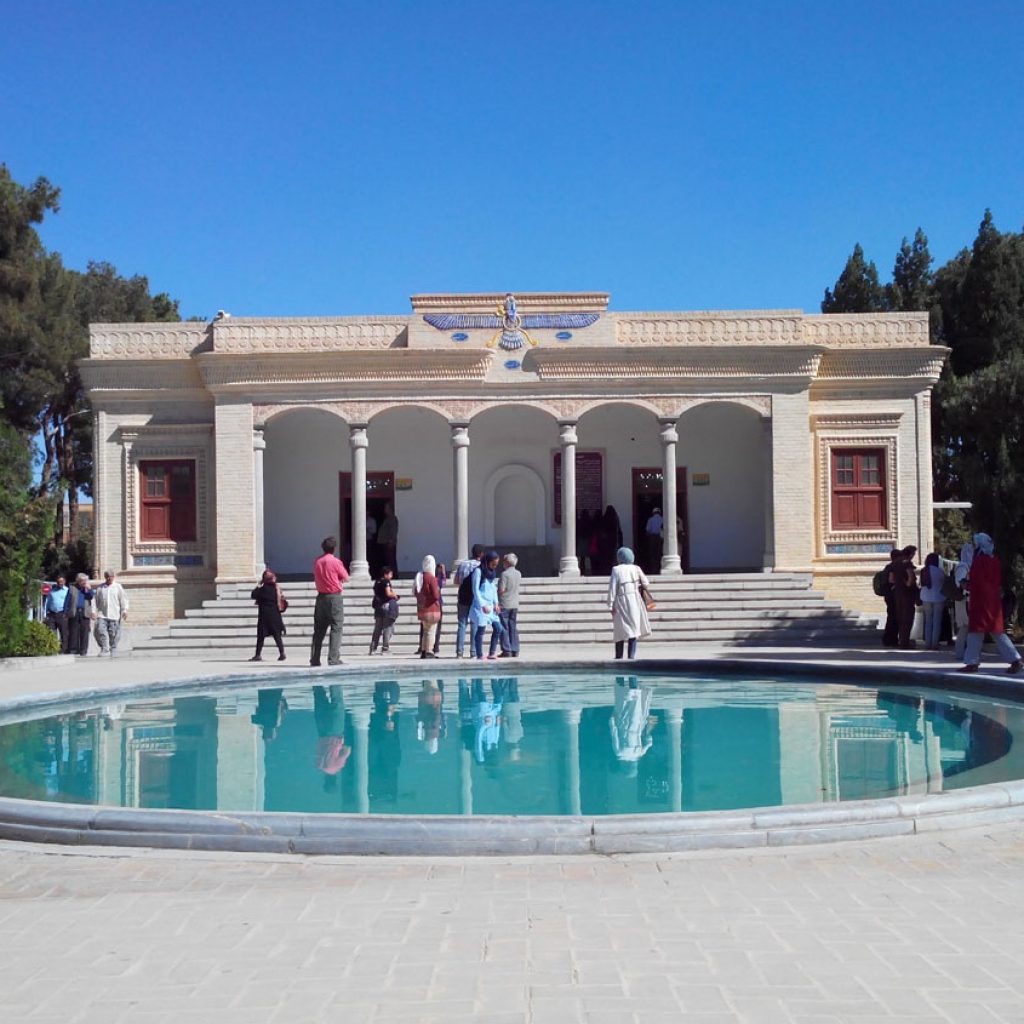The Zoroastrians are the followers of one of the oldest extant religions that base their beliefs on a written text. Its roots allegedly date back to the teachings of an Iranian prophet called Zarathustra, who became known in ancient Greece as Zoroaster. Reputedly living in the late second millennium BC, somewhere in South Central Asia or eastern Iran, Zarathustra taught a dualistic religion in which the creator-god and Lord Wisdom, Ahura Mazda, fights a cosmic struggle against the God of Evil, Angra Mainyu.
Ahura Mazda’s followers are asked to help him in this struggle, by Good Thoughts, Good Deeds and Good Words. People thus have a choice, between supporting Good or Evil. For the Zoroastrians, the world is the arena for the battle between Truth and Falsehood. In the end, Ahura Mazda will win, and all his rightful followers will join him in paradise on earth.
 Zoroastrian fire temple in Yazd, Iran (@FriendlyIran).
Zoroastrian fire temple in Yazd, Iran (@FriendlyIran).
One of the characteristics of the Zoroastrians is their attempt not to defile the earth. Corpses of the deceased therefore used to be exposed on hill tops or on man-made tower-like structures. Nowadays the dead are often buried in concrete graves. Fire and water are regarded as the two main cleansing agencies. The Zoroastrians are also known for their fire temples, the most important of which is the eternal fire still being worshipped in Yazd.
The Holy Book of the Zoroastrians is generally known as the Avesta, which contains the words of Zarathustra. Zoroastrianism used to be the dominant religion of Iran until the advent of Islam in the seventh century AD. It has had a profound influence on Judaism, Christianity and Islam. Their number of followers in Iran is about 25,000, and their main centre in Iran is the city of Yazd. Over the centuries many Zoroastrians have fled religious persecution in Iran and moved to South Asia, where they settled mainly along the west coast of India and became known as the Parsis. Their number in India is estimated at some 60,000.
 Outfit of a Zoroastrian woman from Yazd, Iran . TRC 1998.0274 (dress) and TRC 1998.0352 (shawl). Click the illustration for the TRC catalogue entry for the shawl.Secular dress
Outfit of a Zoroastrian woman from Yazd, Iran . TRC 1998.0274 (dress) and TRC 1998.0352 (shawl). Click the illustration for the TRC catalogue entry for the shawl.Secular dress
For the last few hundred years, the garments worn by Zoroastrian men in Iran have not differed from that of their Muslim neighbours. In contrast, the attire of Zoroastrian women was distinct, although in the last forty years or so, their garments have become more comparable with their Muslim counterparts.
Traditional Zoroastrian women’s clothing is made up of four important items, namely a pair of striped trousers (shalwar), a wide dress (pirahan), a triangular cap (latchak) and a large rectangular head covering (batch). The dress consists of a bodice with attached sleeves and a very large, striped skirt. In winter, many women wear a large silk or woollen covering called a chador.
Sacred garments
Traditional Zoroastrians, both men and women, wear a sacred shirt (sudre) and belt (kushti) under their clothing. These garments are given to a Zoroastrian boy or girl during his or her initiation. The shirt is made out of white cotton and should be kept very clean. The belt is worn directly over the shirt and, again, is made of cotton. These garments are worn underneath all other items of attire.


